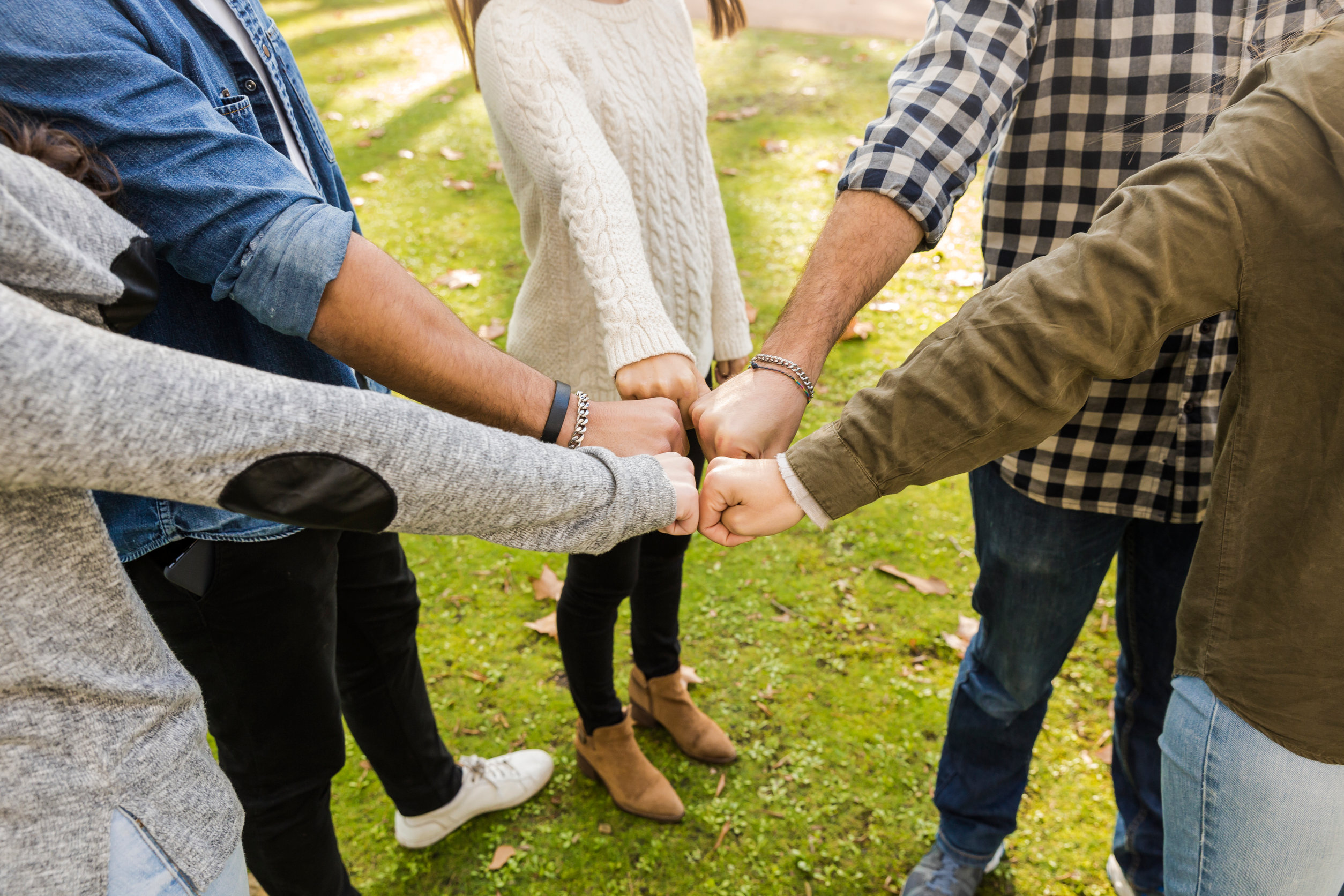| CARMEN: 00:07 | [music] Hi, everyone and welcome to our mental health and substance use series called Recovery Out Loud. Today, we are talking about how we connect with others in our lives and what our attachment style looks like and further, how this can affect addictive behaviors as we become adults. With us today is Greg Powers. He specializes in substance use disorder and is a clinical director for Discovery Point Retreat. Hi, Greg. Thank you so much for being here. |
| POWERS: 00:37 | Hi, Noel. Thanks for asking me. |
| CARMEN: 00:41 | So I think the appropriate place to start in this conversation is really just to talk about we as humans and attachment and how that develops in our formative years. Just give us an overarching notion of what this is because this is kind of a complex topic. |
| POWERS: 01:02 | Sure. So attachment really is how a person views relationships and closeness. And we develop that early, early on. So if a child develops a healthy attachment, he or she is more likely to consider relationships safe, reliable, and important. And this is how we develop security and confidence in how we actually view and explore the world. |
| CARMEN: 01:32 | So there are three general kinds of attachment. Not to say that one person physically fit nicely into one box but it actually helps to kind of create those notions of what it is specifically we’re talking about. So there is an avoidance attachment, which is basically described as somebody who basically does not want attachment, does not seek closeness and intimacy, and maybe doesn’t have the capacity for it. So can you talk about how avoidance attachment develops in our formative years and what that looks like as we try to move into more intimate relationships? |
| POWERS: 02:18 | Sure. So really, when we’re talking about avoidance, I mean, there’s really even kind of– you can kind of break that into two segments as well. So there’s kind of a dismissive and a fearful part. The dismissive aspect is really, you don’t need that contact but you still expect it. And then the fearful is you want and need the context but you fear it coming across as being too needy. And we don’t like that aspect of, “Oh, I’m vulnerable and I need somebody.” And so we tend to retract a little bit from that and that becomes kind of that avoidance of contact that we get. |
| CARMEN: 03:03 | And I read – and correct me if I’m wrong because I am not the subject matter expert on this – that as people who are avoided– as people move in to try to get close that there’s this notion of almost their independence becoming a challenge to the extent that they need to pull away to continue to feel independent and that’s actually where their safety exists. Does that sound right? |
| POWERS: 03:33 | It does, absolutely. So that whole piece of feeling like you need it but to push people away. We kind of get into that internal turmoil. It’s that push-pull aspect that we see. I want to be close to somebody but I need to be independent. I don’t want to feel needy. I need to be more independent. I’m feeling weak if I say that I need somebody but I’m scared to do this all by myself. And so we kind of get it to that internal turmoil of this whole attachment thing and what do we need with it? |
| CARMEN: 04:07 | And so is there a notion of shame in meeting somebody? And you find that in society, there’s some confusion about dependence versus interdependence? So can you kind of talk about that just a little bit? |
| POWERS: 04:23 | Right. So I think it’s it’s that question of we want to be strong. We want to be independent. We want to be that person that everybody comes to and that strength pillar. The problem with that is that we can’t always be that to everybody all the time. And so we get to the point of sometimes, we need to ask for help and being less independent. When we do that, we struggle. We have an internal struggle in that we don’t want to be vulnerable. We don’t want people to feel that we’re weak, that we can’t do something. And it’s that vulnerability that comes around and says, “You’re less than something and that’s not the case. In order for us to grow, we have to have some of that vulnerability. We have to be less stoic, less strong independence that we all feel and maybe even some point part of– here in Texas, we always feel like we have to be bigger, better than anybody else because everything’s bigger in Texas. And that goes with our personalities as well. And so to that extent, it’s very difficult for us to not be the big bad whatever. And so that again comes back to that push-pull of, “Okay, I need to be open and vulnerable. But I really can’t because I can’t show you that vulnerability because you might take advantage of me.” |
| CARMEN: 06:07 | So in our formative years, if we can classify ourselves in terms of avoidance, what actually happened in the formative part of our youth that created that kind of attachment style? |
| POWERS: 06:24 | Well, a lot of it, I think, comes from– early on, I think we get that message of– and I’m going to say probably 90% of the time with boys, it’s always. “Don’t cry. Brush it off. So you fell off your bike. That’s okay. Just man up.” That gets us to that point of being vulnerable. Having feelings and being hurt isn’t safe. And so we get that message that you need to be stronger than whatever is going around you. Now, I said that that’s usually with boys. That happens with girls as well and that they get the message of, “You need to be more like mom. You need to be whatever and stronger so that your maybe your younger siblings don’t see you in this light of being weakness.” And that’s kind of where we come back to. It’s that message that if you express anything less than strength, you’re weak and less than. And that sends that message and an attachment piece that if you can’t be independent, you are less than. Well sometimes, we need help and sometimes we need to raise our hand and go, “I don’t understand.” How many times do we hear from our kids of, “Well, did you ask your teacher for help?” “Well, no.” “Why not?” “Well, because I didn’t want her to think I didn’t know what was going on.” “But you didn’t know what was going on.” “Yeah, but I can’t tell her that.” And I say that because I’ve had that personal conversation with my own kids of, “How are you going to learn if you don’t ask?” “Well, I’m just supposed to know.” Well, that doesn’t always work, right? |
| CARMEN: 08:24 | Right. |
| POWERS: 08:24 | And I feel like I’ve at least gotten to the point that my kids have a healthy attachment connection. But it’s ingrained in them and it’s things that not only do they hear from their parents but we hear it from a society that if you are vulnerable and you need assistance, that’s a problem. |
| CARMEN: 08:51 | So we’re moving on to the anxious attachment style, which in general, again, I’ve researched a little bit. It’s the fear of loss that creates the anxiety, which then prevents someone from moving in close. So it’s almost like the other side of the avoidance, in a sense. So can you explain that in a more eloquent way than I ever could? |
| POWERS: 09:22 | I think you did a great job. I think some of this is really– I mean, we’re talking about insecure attachment. And so some of the stuff that we look at– and if you’ll allow me, I’ll be kind of boring here for a second in that a lot of research studies that have come out talking about substance use, whether it’d be alcohol, marijuana, amphetamines, heroin, you are more likely to have fear of intimacy and have that insecure attachment style when you are not only using those substances but because maybe you have that insecurity in the attachment. You are also more likely to head towards those substances. So is that Catch-22? There’s a lot of evidence out there that says when we’re not secure in our attachments with others. And that can be for a myriad of reasons, right? I mean, it could be early childhood. It could be a relationship that we’ve been in for a long period of time and has really knocked us down and told us, “You’re not worthy.” And so what is it that we tend to head towards? When we have that insecurity, we’re looking for security in any way, shape, or form. Sometimes that comes into the form of another bad relationship because we don’t feel like we’re anything unless we are with somebody else. And sometimes, it comes in the form of I’m looking for something that makes me feel better. And sometimes, honestly, we turn to drugs and alcohol for that security and that sense of feeling better. When we talk about that insecurity, that attachment of where we are with people, it’s also where we are with ourselves and where we are with substances and alcohol. Hopefully, that makes sense. |
| CARMEN: 11:34 | Yes, and you kind of took the words right out of my mouth because ultimately, what the whole conversation is it’s about connection. We, as humans, are built for connection. And so I think what I am wanting to relay in this conversation is how we can begin to look at these things, begin to identify them and change them. If possible, can you change your attachment style? Is that even possible? |
| POWERS: 12:07 | You can, and I think this year has been a prime example of that. Really, I mean, when we look at COVID and what we’ve been doing since March, our attachments have changed. We don’t have the same relationships that we had a year ago where because of health reasons, we’re isolated. Some of us are not working in the office anymore. We’re doing things virtually. Our kids are doing school virtually. We’re not going to the grocery store. We’re not going to the mall. So the attachment and the connections that we’ve had in the past have changed this year. To that, what has that done to us? My personal experience has been I enjoyed being able to go out and interact with people and events and that kind of stuff. I have recently had the opportunity to be at a event that had two or three hundred people at it and I was scared. You get nervous because now there are all these people. And it wasn’t that I was scared I’m going to get sick. It was, “Oh my gosh, there’s a bunch of people around here. What do I do?” So just by nature of everything that’s been going on, we’ve changed how we interact and how we perceive. And so in that, sometimes what ultimate– unfortunately, what has happened is, again, we come back to, okay, I don’t feel good about what’s going on. I’m just kind of scared. I don’t have those attachments. I’m not talking to my family. I’m not going out. So what am I doing? I’m substituting. So I’m finding something that makes me feel better about myself, about the situation. |
| POWERS: 14:05 | So that’s a long thing. To answer your question, can those things change? Yes. So I’ve seen it change adversely. I think it can change in the positive as well. So as we start dealing with our addictions and looking at, okay, what has my life been like? When we’re in our addiction, sure, maybe we’re hanging out with our friends, right? Not really friends. When we get sober and we get clean off of substances, we have to start finding our new playmates. And what that looks like is, okay, now we’re starting to go back out into society and figure out what’s it like to go to a football game and not drink or go to my kids’ events and really be present and not be thinking, “Gee, I’ve got a bottle in the car and I really need to go drink something.” |
| POWERS: 15:10 | So we get to that point of recognizing, okay, things are going to change and we start putting those positive changes in place. We’re going to get to the point that COVID is over and done with, I hope, and we’re going to have to start getting back out into what we remember as being normal and going to the grocery store and standing in line behind somebody and not going, “Ooh, do I need to be 6 or 10 feet away? Or you know what? I’m not even walking in the grocery store. I’m pulling up to the side and you can put the groceries in my trunk because I ain’t going in there. We’re going to get back to that at some point. And I think even when we look at addiction, we can get back to what is perceived as normal or we want it to be normal and interacting with individuals and finding those attachments that are healthy not only in interaction but healthy for us because it strengthens us and gives us the ability to go, “Okay, I can get through this day,” and we can do that through our attachments. |
| CARMEN: 16:18 | One last question. When we’re talking about attachment, we’re talking about connection, would you agree that even with all of this, it has forced us to look at our own connection with ourself and that that’s where the connection starts and if that part is not intact, it doesn’t matter what’s happening around us? So can you talk us through that piece of it? That’s the hardest part, is sitting with those uncomfortable feelings, not reaching for the drink or the drugs, but figuring that piece out. |
| POWERS: 16:57 | And I’m going to say this, and I am by no means a relationship expert, but I have told countless number of people, if you aren’t in a good place with yourself, you’re not going to be good in a relationship with anybody else. So it starts with you. And that really, to your point, there are going to be some uncomfortable moments with yourself and you’re going to have to be honest with yourself in order for you to get to a place that you can be with anybody else socially, romantically, or anything else. And that if you’re not happy with you, it’s going to come across with everybody else and you’re not going to have healthy relationships. You’re not going to have healthy connections if you’re not. |
| CARMEN: 17:48 | Final words. What if somebody is listening to this – this is always how I end our interviews – and they’re really hesitating to get help? All of this sounds great, but that jump is really frightening for people to look at the real stuff. What would you say to them? |
| POWERS: 18:12 | It’s worth the effort and it’s worth being vulnerable for that moment to raise your hands and say, “I can’t do this by myself and I need help.” Be open to what you receive on the other end of that. It is probably one of the scariest moments that you will ever experience, but probably also the most rewarding and the one that you will never forget. Coming out on the other side is nothing shy of miraculous, and it is worth the effort. Take that time to say, “I need help and I can’t do this by myself,” and allow yourself to explore the possibilities of what can be. |
| CARMEN: 19:04 | Greg, thank you so much for taking time to have this conversation, this very important conversation. I want to thank our listeners for tuning in. So I hope everyone has a great day and give this some deep thoughts. Thank you so much. |
| POWERS: 19:22 | Thanks, Noel. |
| CARMEN: 19:24 | Okay. Bye [music] |
Human Connection and the Impact of Addiction
Featured Guest: Greg Powers, LCSWS

Our host Noelle Carmen speaks with Discovery Point Retreat Clinical Director Greg Powers to discuss the importance of human connection, the different ways we learn to connect with others, and the impact connection has on addiction and addiction recovery.





